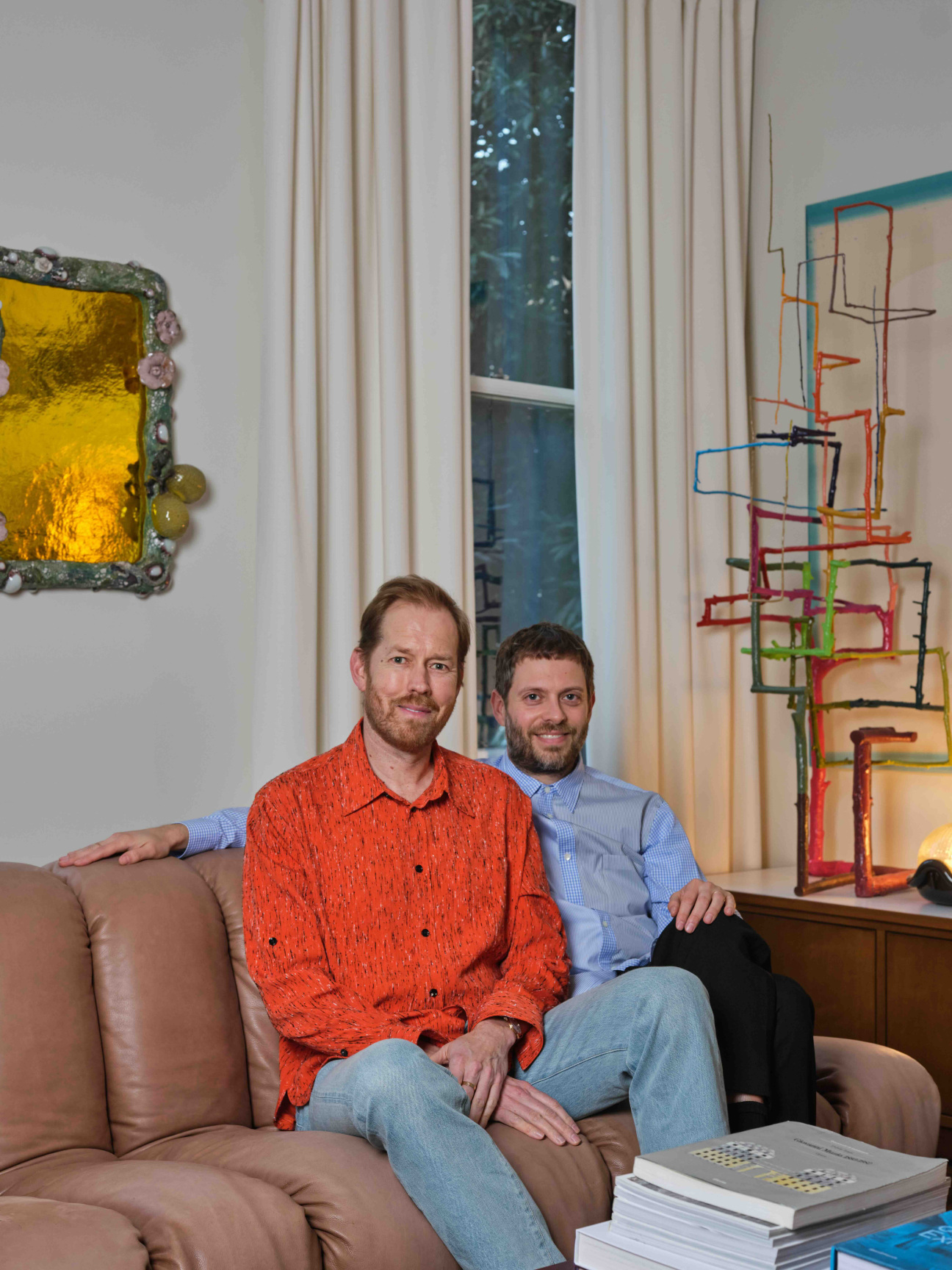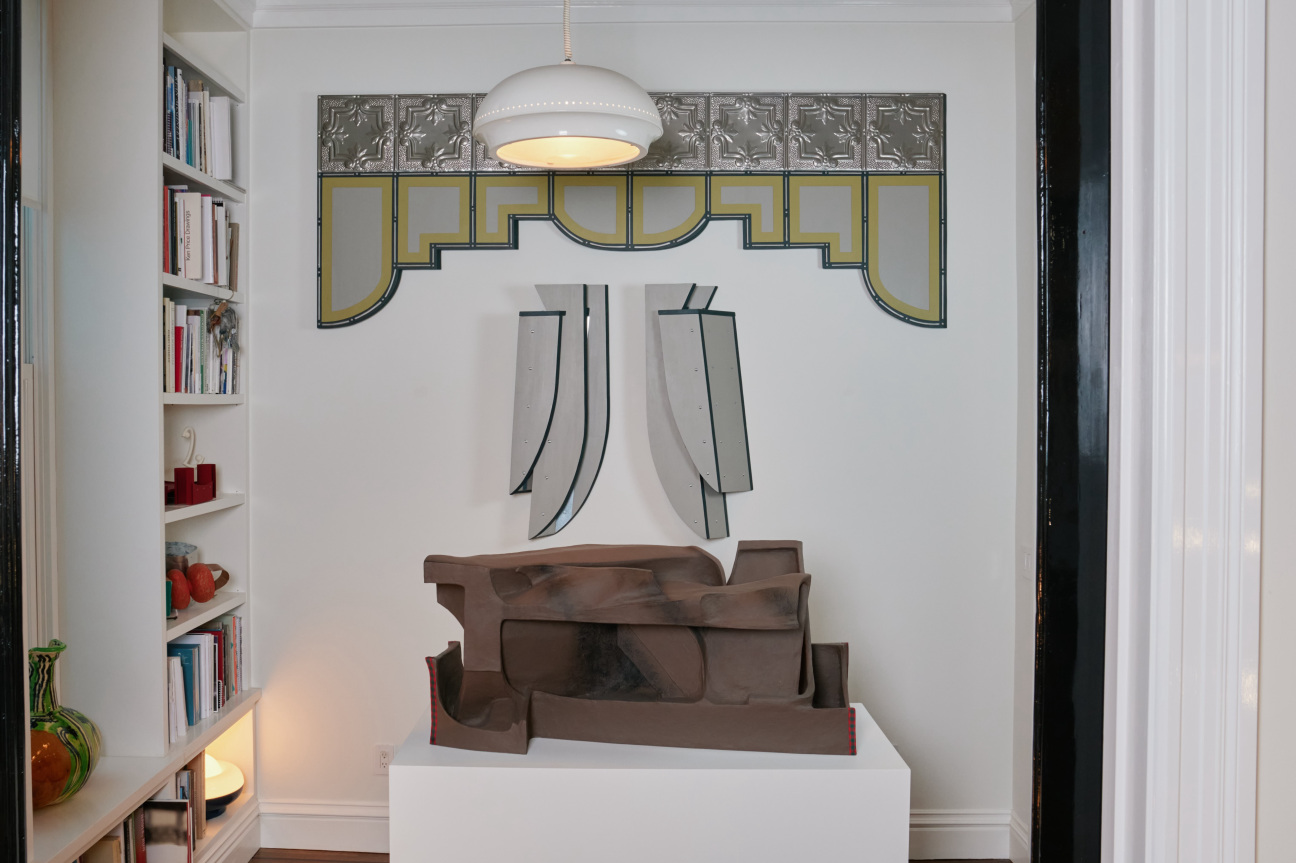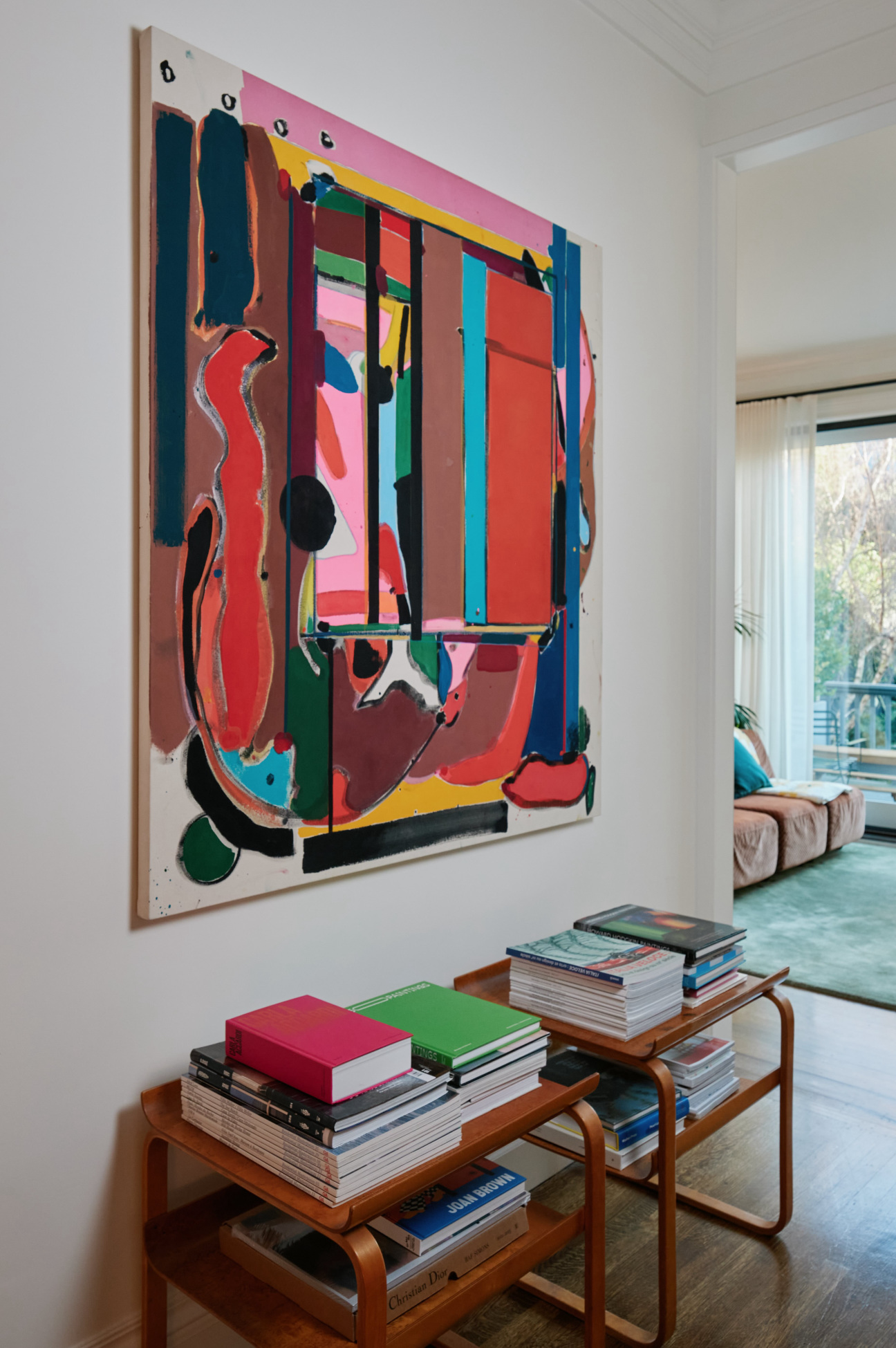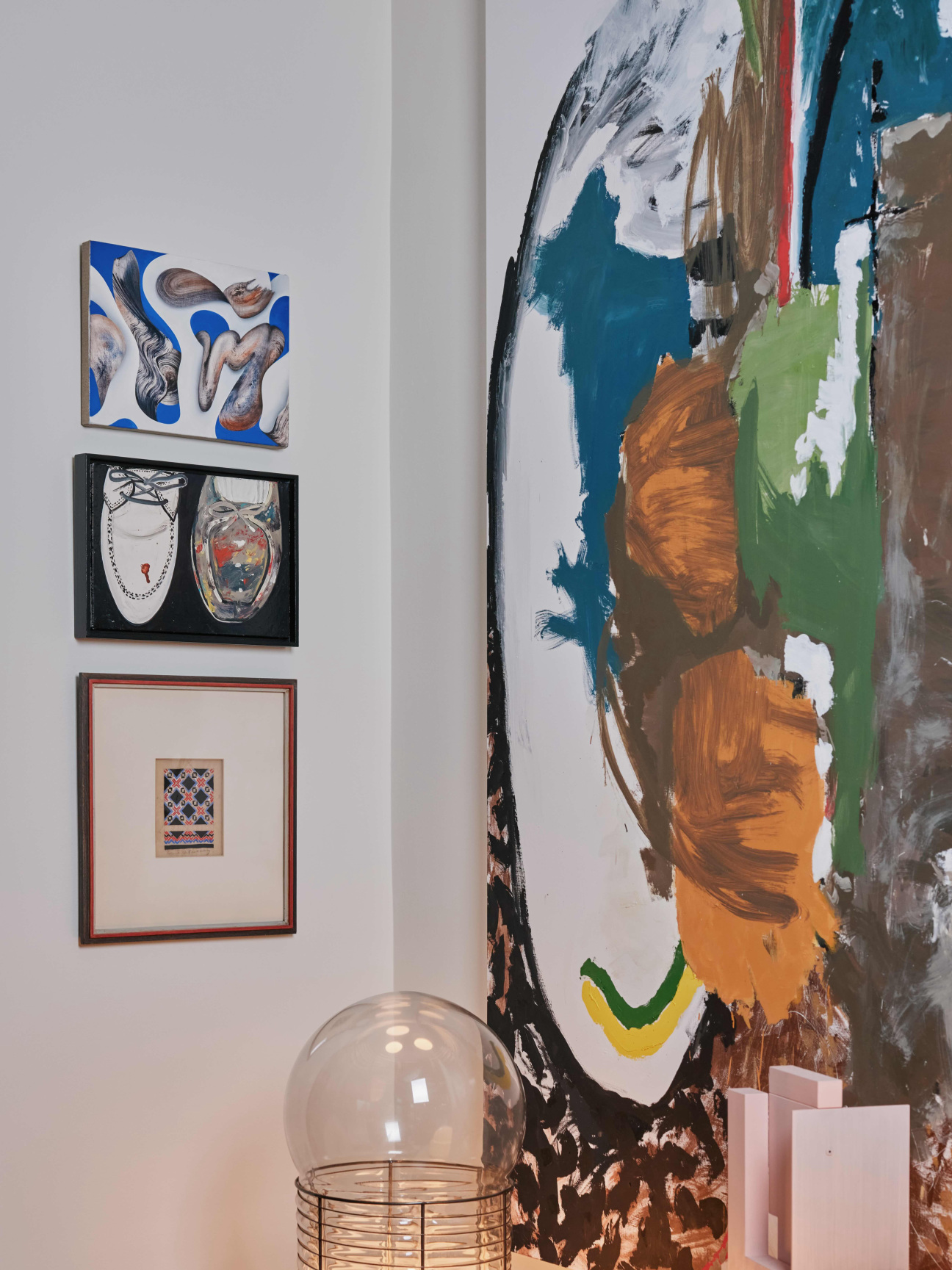
All photography by Jenna Garrett and courtesy of Jim Abrams and Mario Russo.
Collectors Mario Russo and Jim Abrams have a clear take on San Francisco’s art scene: personal, unpretentious, and brimming with hidden gems. After all their own collection is a direct reflection of that community. "We both grew up with people who are now artists, and our collecting began through those personal connections," the pair reveal, as they spoke with CULTURED ahead of this year's FOG Design+Art fair. "Many of the artists in our collection are friends or have some sort of link to each other."
Russo, who grew up in Naples, Italy, and Abrams, a California native, are two of the fair's honorary co-chairs and proud advocates for San Francisco's tight-knit scene. For them, local galleries and figures like Ed Gilbert were pivotal in shaping their journey into the art world. As for their current obsession? It's sculptor Matt Paweski, whose industrial metalwork will debut at FOG this year. When it comes to collecting, their advice to newcomers is simple. You just have to look around you.
What do you think makes the San Francisco art scene distinct?
Mario Russo and Jim Abrams: The city tends to reflect a certain personality. SFMOMA is undoubtedly one of the world’s most important museums, and the region has so many profoundly impressive collections. But San Franciscans are often a bit modest and unostentatious, and many of these collections are under-the-radar and very personal. The art history of San Francisco (and northern California more generally) also still feels slightly out of the mainstream, notwithstanding its richness and importance. FOG is also very distinct—because of its size and the number of social events held throughout the week, it feels particularly warm and collegial and is an especially good fair to develop relationships with galleries.

Which work in your home provokes the most conversation from visitors?
Russo and Abrams: We are very fortunate to live with a Vincent Fecteau sculpture, which is probably fair to describe as abstract. It’s large and almost entirely brown. It often provokes strong reactions––not so much negative or positive––but about what it represents or means. It also feels quite out of time and formal but also vaguely crafty and futuristic.
How has the local art scene influenced your collection? And how does being involved with events like FOG change the way you approach collecting?
Russo and Abrams: Our local galleries have served as an entry point to many artists and a source of education. We learned so much from people like Ed Gilbert (who was a critical component of Paule Anglim’s gallery) and have met some of our best friends through art. FOG is a special experience because of its intimate size. It’s easier to digest the work at the fair and interact with dealers over the course of the week than at larger fairs. We’ve made some important relationships with galleries at FOG that probably wouldn’t have happened in another, less personal context. It’s also notable that many renowned galleries (some with single locations abroad like Paris or Milan) that do not typically participate in “regional” fairs choose to attend FOG.

Which artist are you currently most excited about and why?
Russo and Abrams: There are too many to mention, but we have long been big fans of the sculptor Matt Paweski, and his work is being presented at FOG this year for the first time with Herald St gallery. He’s a wizard at metalworking and industrial painting. His practice is primarily sculpture, but he also makes furniture and lighting.
What factors do you consider when expanding your collection?
Russo and Abrams: This might sound a bit generic, but the primary factor is whether we love the work, the artist’s practice more generally, and whether it relates to other work in our collection. Also critical is whether it can be conserved in a domestic setting and whether it can be physically accommodated in our house.
What are the three must-see shows this month?
Russo and Abrams: It feels unfair to choose only three shows, but these are notable: Tamara de Lempicka at the de Young Museum, Leonora Carrington at Gallery Wendi Norris, and Davina Semo at Jessica Silverman.

What is the strangest negotiation you've ever had with an artist or dealer?
Russo and Abrams: During the Covid lockdown when artworks were presented in virtual rooms or over Zoom.
What piece of advice would you give someone who wants to get into collecting?
Russo and Abrams: Find those galleries with programs that resonate with you. Great galleries will have a strong point of view, and your interest in one artist will probably connect to another in the program. Listen to your doubts––wait until those moments when lightning strikes and those doubts are non-existent. Finally, the fact that an artist is historically and culturally important shouldn’t dictate whether you like or collect the work.










 in your life?
in your life?

